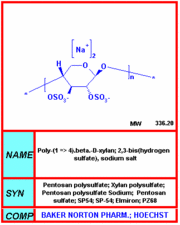SAN DIEGO--Interstitial cystitis may be the culprit behind millions of cases of overactive bladder and chronic pelvic pain and should be considered in the differential diagnosis, investigators said at a meeting sponsored by the International Pelvic Pain Society.
Approximately one-third of the 9 million women with chronic pelvic pain (CPP) have negative laparoscopies, and 95%--or 2.5 million--of those patients probably have interstitial cystitis (IC), said Dr. Charles Butrick of the Kansas City Women's Clinic in Overland Park, Kan.
In addition, 4.5 million of the 17 million patients diagnosed with overactive bladder fail treatment with anticholinergic drugs and most likely have IC, Dr. Butrick said.
A close comparison of CPP and IC reveals virtually identical overlap between symptoms, said Dr. Edward Stanford of St. Mary's/Good Samaritan Hospital in Centralia, Ill. Both of these conditions are characterized by dyspareunia, perimenstrual flares, flaring after sex, symptoms upon voiding, and pain in the lower abdomen, vulva, urethra, vagina, medial thighs, and perineum.
Recurrent urinary tract infections (UTI) are another clue to possible IC, Dr. Stanford noted. In a study he did of patients with recurrent UTI, 81% were found to have sterile urine, which is one of the hallmarks of IC.
Also, some patients may report a feeling of pressure rather than pain. Indeed, they-may make comments like "It feels like there's an elephant sitting on my stomach," Dr. Butrick said.
In a study conducted by Dr. Stanford and his colleagues at three medical centers around the United States, 82% of 134 patients with pelvic pain, vulvodynia, endometriosis, and dyspareunia had a positive potassium sensitivity test, suggesting that their pain had a bladder component.
Seventy-five percent of the study patients had reported urinary symptoms, but only 2.9% of those women received an initial diagnosis of IC.
In a follow-up study, 85% of 244 patients with CPP tested positive on the potassium sensitivity test.
IC is often misdiagnosed, because its symptoms vary in pattern and severity. It may range from what appears to be recurrent, mild UTI to severe, recalcitrant cases, Dr. Butrick said at the meeting.
Rather than a disease of the bladder, IC may be a visceral pain syndrome in which damage to the bladder epithelium ultimately results in centralization or neurobiochemical changes in nerve impulses traveling from the bladder to the spinal cord and brain. These impulses may lead to extreme sensitivity to pain.
The impulses may become self-perpetuating, contributing to the chronic nature of the condition.
A positive potassium sensitivity test can establish the diagnosis but it is excruciatingly painful.
"Only do it if you have a rescue solution [heparin plus Marcaine] available," Dr. Butrick commented. "Otherwise, you're doing the patient a disservice."
In an effort to spare patients that trauma, investigators at Ortho-McNeil Pharmaceutical developed the Pelvic Pain and Urgency/Frequency symptom scale, a questionnaire designed to identify patients who probably have IC.
Dr. Stanford and his associates tested the questionnaire in 233 patients who were referred by urologists and gynecologists and then compared the results with those of normal control subjects.
Patients who are "visibly allodynic" and score 15 or more on the questionnaire can probably skip the potassium sensitivity test and be treated for IC, Dr. Butrick said.
Treatment should address all of a patient's sources of pain and dysfunction.
Pentosan polysulfate (Elmiron) is the first drug that was approved for the treatment of IC.
This agent relieves feelings of urgency and frequency, but it has only a modest effect on pain and is associated with a high dropout rate with long-term use if it is the only therapy that's offered.
The best results are obtained when the drug is combined with an antidepressant such as amitriptyline, as well as behavior modification and training in stress reduction techniques, he said.
Patients should also be warned that it can take up to 4 months for Elmiron to start working and as long as 24 months to achieve complete relief, Dr. Stanford said at the meeting.
"I tell my patients, 'I need 2 years of your life.'"
COPYRIGHT 2002 International Medical News Group
COPYRIGHT 2002 Gale Group



